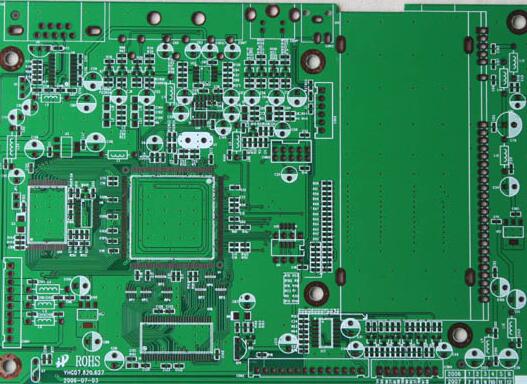For electronic equipment, there will be a certain amount of heat when working, so that the internal temperature of the equipment rises rapidly. If the heat is not emitted in time, the equipment will continue to heat up, the device will fail because of overheating, and the reliable performance of electronic equipment will decline. Therefore, it is very important to conduct a good heat dissipation treatment for the printed circuit board.
1. heat dissipation copper foil and the use of large area of power supply copper foil.
According to the figure above, the larger the area connected to the copper skin, the lower the junction temperature
According to the figure above, it can be seen that the larger the copper covered area, the lower the junction temperature.

2. hot hole
The hot hole can effectively reduce the junction temperature of the device, improve the uniformity of the temperature in the direction of the thickness of the board, and provide the possibility to adopt other cooling methods on the back of the PCB. The simulation results show that the junction temperature can be reduced about 4.8°C when the thermal power consumption of the device is 2.5W, the spacing is 1mm, and the center design is 6x6. The temperature difference between the top and bottom surface of the PCB is reduced from 21°C to 5°C. The junction temperature of the device increases by 2.2°C compared with that of 6x6 after the hot-hole array is changed to 4x4.
3. IC back exposed copper, reduce the thermal resistance between the copper skin and air
4. PCB layout
Requirements for high power, thermal devices.
A. Heat sensitive devices should be placed in the cold wind zone.
B. The temperature detection device is placed in a hot position.
C. Devices on the same printed board should be arranged as far as possible according to their calorific value and degree of heat dissipation. Devices with low calorific value or poor heat resistance (such as small signal transistors, small-scale integrated circuits, electrolytic capacitors, etc.) should be placed at the upper flow (inlet) of the cooling air flow. Devices with high calorific value or good heat resistance (such as power transistors, large-scale integrated circuits, etc.) are placed downstream of the cooling airflow.
D. In the horizontal direction, the high-power devices should be arranged as close as possible to the edge of the printed board to shorten the heat transfer path; In the vertical direction, high-power devices are arranged as close as possible to the printed board, so as to reduce the influence of these devices on the temperature of other devices when they work.
E. The heat dissipation of the printed board in the equipment mainly depends on air flow, so it is necessary to study the air flow path and reasonably configure devices or printed circuit boards in the design. Air flow always tends to flow where resistance is small, so when configuring devices on printed circuit boards, avoid having a large airspace in a certain area. The configuration of multiple printed circuit boards in the whole machine should pay attention to the same problem.
F. the temperature sensitive device is placed in the temperature area (such as the bottom of the equipment), do not put it on the heating device is directly above, multiple devices are staggered layout on the horizontal plane.
G. Place the power consumption and heating devices near the heat dissipation position. Do not place hot components in the corners and edges of the printed board unless there is a cooling device near it. In the design of the power resistance as large as possible to choose a larger device, and in the adjustment of the printed board layout so that there is enough space for heat dissipation.